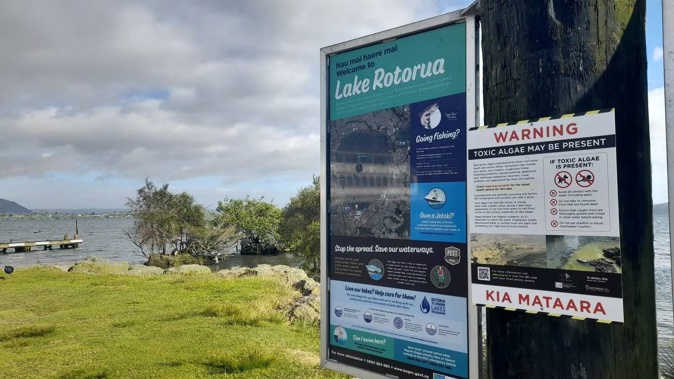
Summer heat is driving a spate of potentially-toxic algal blooms around the country, with swimmers urged to be on the lookout for warning signs.
While most naturally occurring freshwater algae were harmless (if a little slimy), one group called cyanobacteria could pose a health threat when dry, warm weather helped it thrive in our lakes and rivers.
Blooms have already been reported in Lake Whakamaru northwest of Taupō, Lake Rotorua and Lake Rotoiti in Bay of Plenty, Waipoua River and Hutt River in the Wellington region and Waikirikiri-Selwyn River in Canterbury.
Water in parts of the Waikato River and Lake Whakamaru, northwest of Taupō, has also turned visibly green, with people sharing pictures on social media.
Contact with toxic algae could cause vomiting, diarrhoea and skin irritation - and there was the potential for serious harm to small children and animals if they ate it.
The blooms appeared to be a bigger problem this summer than previous years, with an El Nino pattern bringing plenty of hot, settled weather.
/cloudfront-ap-southeast-2.images.arcpublishing.com/nzme/ZOVCXJI5WBB4VCSFQWSXWYC7QY.jpg)
A Waikato Regional Council environmental monitoring officer collects water samples. Blue-green algae has been reported in parts of the Waikato River and many other sites around the country this summer.
“Over the last couple of years we’ve had a lot more rain, which has sheared the algae off the rocks and cleaned them again,” Hawke’s Bay Regional Council’s science manager Anna Madarasz-Smith said.
“But this particular weather that we’ve got at the moment is exactly what potentially toxic cyanobacteria love and can really make their home in,” Madarasz-Smith said.
“We saw similar blooms, particularly influxes of cyanobacteria, coming up during the very dry summer weather of 2017-18 and 2018-19.”
- El Nino weather expected to draw more sharks, scientist says
- Achoo! Hay fever soars as El Nino stirs up huge levels of pollen
- How is the rest of summer looking? Forecasters take a long look at El Niño
While the cyanobacteria species Microcoleus autumnale was usually to blame for algal blooms in rivers, a range of algae were involved in lake blooms.
“But typically, you’ll see that the water is discoloured - it may look like a green pea soup or brownish or reddish - and that’s a surefire indication that the algae are really enjoying the weather,” Madarasz-Smith said.
“One of the biggest issues we have is that it’s sometimes only after this cloudiness that we start to see the highest peak of toxins in the water, so it’s a matter of regular testing and people understanding what to look for.”
/cloudfront-ap-southeast-2.images.arcpublishing.com/nzme/CRF7STTPUOF6BAIYPD4RRVB3MY.jpg)
Toxic varieties of the blue-green algae can be especially harmful to dogs.
In stony rivers, toxic algae sometimes formed leathery-looking mats on rocks in the riverbed, coloured from blackish brown to dark green.
After washing up and drying out, mats tended to produce a strong musty smell that could attract dogs to eat it - sometimes with tragic consequences.
Madarasz-Smith encouraged people to check their local council website, or the Land, Air, Water Aotearoa site, before taking a dip at their swimming hole.
Jamie Morton is a specialist in science and environmental reporting. He joined the Herald in 2011 and writes about everything from conservation and climate change to natural hazards and new technology.
Take your Radio, Podcasts and Music with you









